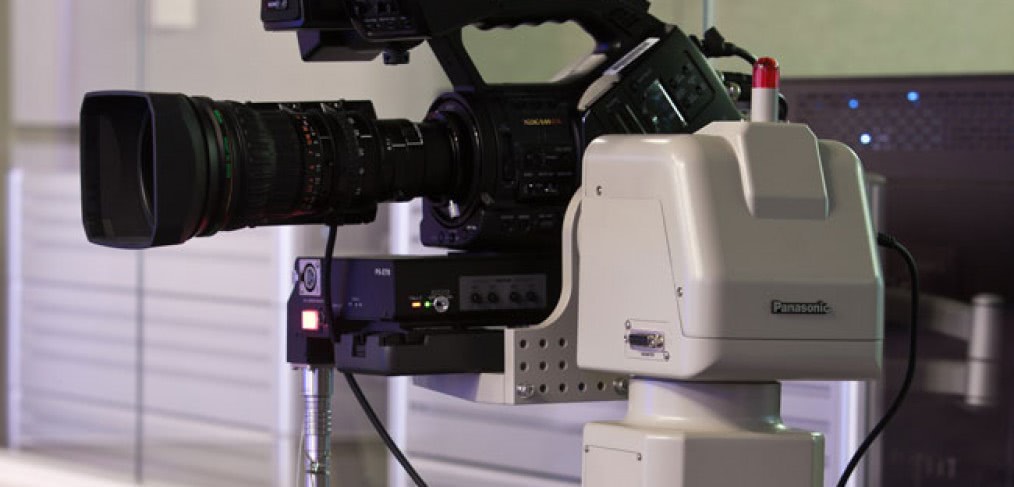
PRESENTATION VS. PRODUCTION: USING VIDEO TO CONNECT TO CLIENTS
If there is a defining characteristic of the new millennium, it’s technology. The internet connects over 8.7 billion people who watch 39 billion online videos per month. The average American has 5-7 devices per household. We have an estimated 25-40 apps on our smartphones and over 29 million people watch videos on YouTube, making it the number two search engine in the world. What does all of this information tell us? As a culture, we are obsessed and crave multimedia.
In the age of digital, we don’t just crave information, we crave interaction. We want more from technology than a passive transfer of knowledge. We want tone. We want mood. We want emotion.
RTKL has been presenting mainly via PowerPoint for years. It’s time to change.
At RTKL, we’re often sending our concept presentations to the client ahead of time, without the ability to talk them through our process. We also face the challenge of presenting our projects in another country or in another language through a translator. While books only allow for words or static images, a video combines audio and visual effects to broaden our understanding of the design and draw the audience into the emotion of the concept. Our presentations need to go above and beyond to keep RTKL modern as technology shifts. Now, people are capturing video on their iPhones. And with innovative companies like GoPro, experiences and emotions are captured and presented in new ways. The bottom line? Successful presentations have always needed a captivating speaker to sell an idea, but what really sells an idea are tools that go beyond static words and images, and stir the emotions.
What are our industry peers doing in the marketplace today? Who can we look to for inspiration? I’ve researched two different types of creative companies: architecture firms and marketing/advertising agencies, to gain better insight into the world of multimedia and the selling of ideas.
Architecture firms use video as company portfolio pieces, platforms to debate the present and future of design, and computer modeling animations. At RTKL, we have three platforms dedicated to video: YouTube, Vimeo, and YouKu (China). Gensler has its own YouTube channel. SOM (Skidmore Owings and Merrill) has integrated commercial videos into their built project sites. BIG (Bjarke Ingles Group) utilizes special effect video, including the presenter, animating a dynamic model of the architecture design.
Marketing and advertising agencies, like Leo Burnett, use motion graphics to enhance their brand. By establishing their knowledge and brand position at the beginning of their presentation, they create a foundation for the rest of their pitch. While images, fonts and colors set the mood of their presentation, motion graphics help define brand value. They establish objectives, tactics and concepts. If a picture is worth a thousand words, a video is worth a million. It helps to elaborate on the main ideas of a presentation while creating an instant connection with the client.
Over the next few months, I’m going to continue my research on the best ways to choreograph multimedia presentations. I’ll be studying media techniques, processes, and most importantly, how to overlay the human element into each presentation; establishing a relevant and emotional connection with our clients. The first step will be interviewing other designers for an in-depth understanding of how they utilize video in their presentations. Second, I will create a storyboard for the video, learning how to sequence the pieces and parts from the interviews. Finally, I will compile the presentation template using video studio programs.
Connectivity is the subject of The 2014 Leonard S. Kagan Fellowship for Research and Exploration—a big topic kept purposefully loose to encourage broad thinking about the power of great ideas to bring people together. This year’s winning entries showed clarity of vision and tackle various aspects of connectivity—digital, social and physical, respectively—and all reflect an appreciation for the power of connections to give us new insights and greater control over the impact of our work. In the next few months, follow You Are Here to see the progress of these teams as they attempt to better connect RTKL to systems and information.

Lori, thanks for the outreach to push our communication voice further. Your words are not new but certainly we all should be listening. RTKL has the opportunity to challenge the typical storytelling formulas. Your references are comparable but I would suggest we start with academia as a way of seeing what is really ‘hot’. Our competitors, albeit a bit more with it technically… are still in a small orbit around us. I’ve been teaching at Art Center College of Design for just shy of 15 years and I am always completely amazed at the engagement that my students can create. The program isn’t the issue… its remembering that the story is the key, and let the appropriate program tool kit present itself.
keep pushing great engagements!!